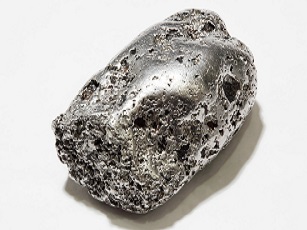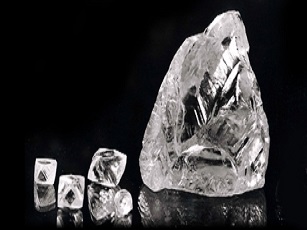Amber Mining
AMBER MINING:
Amber mining involves extracting fossilized tree resin from geological formations where it naturally occurs. Highly valued for its beauty, color, and the prehistoric insects and organisms it often preserves, amber mining merges paleontology, geology, and gemology. The rarity and distinctive qualities of amber make it a prized gemstone of significant cultural and scientific importance, cherished for its aesthetic appeal and scientific insights.
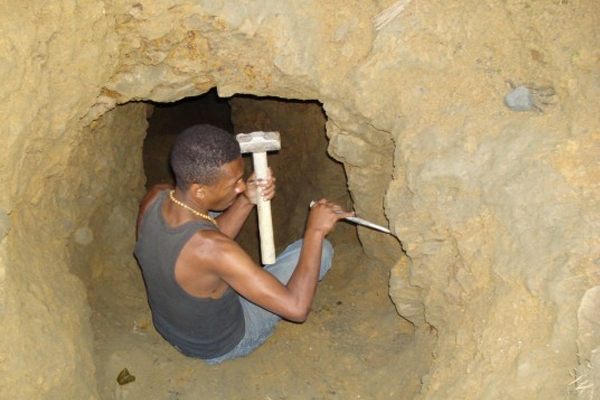
PROCESS OF AMBER MINING:
The mining process can vary depending on the location of the amber deposits and their geological context. Here's an overview of the typical process of amber mining:
- Geological Survey and Prospecting:
- Surface Amber Collection:
- Open-Pit Mining:
- Underground Amber Mining:
- Extraction of Amber:
- Cleaning and Processing:
- Preservation of Inclusions:
- Market and Use:
- Ethical and Environmental Considerations:
Amber mining begins with geological surveys and prospecting to identify potential amber-bearing areas. Geologists and prospectors examine sedimentary rock layers, coastal areas, riverbanks, and forested regions to locate potential deposits.
In some cases, miners collect amber directly from the surface. This is common in coastal regions where amber is washed ashore by waves and currents. Miners may search for amber along the shorelines, especially after storms or heavy rainfall.
When amber deposits are located near the surface but are not easily accessible, open-pit mining methods may be used. This involves the excavation of the overlying rock and soil to access the amber-bearing strata.
If amber deposits are located at greater depths, underground mining methods may be employed. This process involves the creation of tunnels, adits, or shafts to access the amber-rich geological layers. Miners use hand tools, such as picks and shovels, to extract amber from the rock and sediment.
Once amber is exposed, miners carefully extract it from the surrounding matrix. Special care is taken to avoid damaging the amber pieces, especially if they contain valuable inclusions..
Extracted amber may undergo cleaning and processing to remove impurities and improve its appearance. This can include washing, cutting, and polishing.
One of the unique aspects of amber mining is the preservation of prehistoric inclusions, such as insects, plant material, and small vertebrates. Miners and collectors take special precautions to avoid damaging these inclusions.
Processed and polished amber is typically used in jewelry and ornamental objects. Amber is appreciated for its warm, golden hues and the fascinating inclusions that provide insights into ancient ecosystems.
Responsible amber mining practices are essential to minimize environmental impact and ensure the ethical sourcing of amber. Protecting amber deposits and conserving amber-bearing regions is also a priority.
WHERE IS AMBER FOUND?
The precious gemstone was created when resin from extinct trees hardened over a period of millions of years. Amber repositories are widely distributed across the continents of Asia, Europe, and North America. Since the Bronze Age, the Baltic region has housed the largest reserves of amber, encompassing Russia, Germany, Poland, and Lithuania. Other significant deposits are found in Ukraine and the Dominican Republic in the Caribbean region. Although less known, amber is also found in countries such as the United States, Japan, India, Africa, Austria, and France.
In North America, the state of Arkansas boasts the largest deposit, while amber from the Cretaceous period can be found in old clay mines in New Jersey. In Asia, amber is found in coal mines, with highly valued specimens primarily extracted from Northern Myanmar. The largest deposit is located in Russia's Primorsko-Akhtarsk region, situated 40 km from Kaliningrad, another major source of pure amber.
WHAT IS ITS VALUE?
Although it is widely associated with yellow, orange, or brown colors, rare forms of amber can be found in blue or green. Pure amber, called solar stone, is the most valuable variety. If fossilized plants or insects are trapped within, it can greatly increase the value of the stone. Mining amber is highly profitable for Russian and Ukrainian miners, who can earn more than $50,000 from a single pit. The average price ranges between $150 and $4,500 per kilogram.
METHOD OF EXTRACTION:
There are two ways by which amber can be extracted:
From the sea- This is the traditional method of extraction and is still in use today. Amber washes ashore on the Baltic Sea shores and can be gathered from there.
From the Land -Mining for amber using machines and equipment began only after the Industrial Revolution and the advent of modern technology. These days, it is largely mined from the earth by means of deep open pits or quarries.
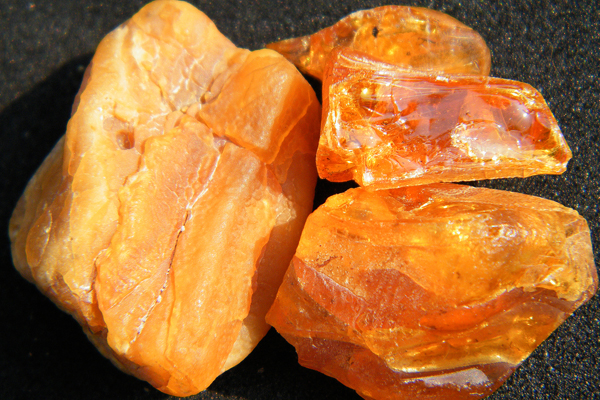
TECHNIQUES EMPLOYED IN THE EXTRACTION OF AMBER:
Land Mining
Amber is uncovered from a layer of earth called 'blue soil' due to its color. This layer is about 40-60 meters below the surface and ranges from 2 to 12 meters in thickness. It is extracted from open pits or mines, with the former being more common nowadays. The high value of amber is due to the intensive labor involved in its extraction. Special excavators are used in the quarries to remove the top layers of earth that are clear of amber. Equipment such as chain bucket excavators was used, and the amber was transported on conveyor belts for further processing. These days, pipelines are preferred for transporting the extracted amber to preserve its quality.
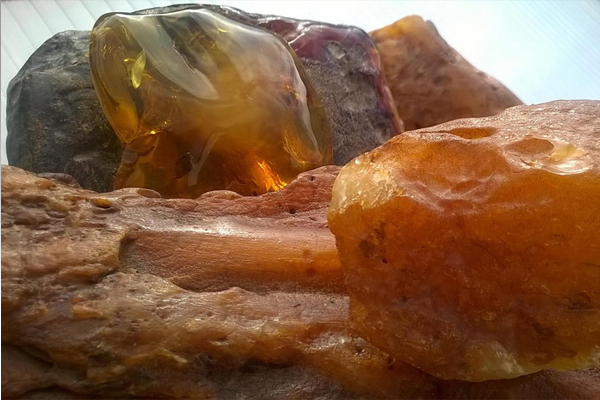
Hydro Mechanization Process
The amber-free layers can also be washed under high pressure through a process called jetting. In Russia, hydro-mechanization is now favored over the use of excavators, as excavators caused landslides that resulted in mine collapses and loss of lives. The bulky upper layers of rock are washed away by streams of water. During this process, a mixture of the layer and water, called 'hydro mixture', is formed. This mixture is purified and released into the sea through pipelines. The mixture of amber and blue soil obtained undergoes an elaborate process in which it is separated into fractions of different sizes.
The blue soil layer is first diluted before being transported to the plants. It is then passed through a mesh with a size of about 5 cm, and the workers collect the large pieces of the mineral. Subsequently, smaller sifters that can retain pieces of amber up to 2 mm are used. The remaining mixture that manages to flow through the smallest sieve is not wasted; it is passed through the arc sieve system, washed, and dehydrated.
A separator containing a solution with a density lower than that of amber is used to segregate the pieces with different masses. The lighter amber fractions float at the surface. After being washed and dried again in a heater, the pieces of amber are passed through meshes of varying diameters placed one above the other. Vibration is used to separate them into three fractions based on their size.
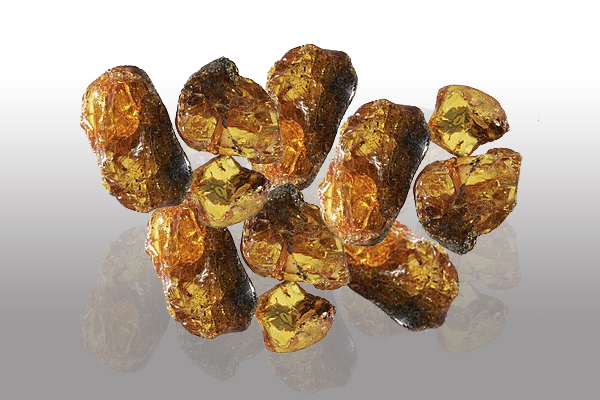
Tunnel Mining
In the Dominican region, amber is mined from mountainsides by digging narrow tunnels that may extend up to 20 meters. The La Toca mines are especially known for producing vertebrate fossils. Amber exposed after landslides is removed using picks and shovels. The mining process is not mechanized and is highly risky, as the tunnels are poorly lit, damp, and slippery, lacking proper structural support.
Miners pick out the amber after pumping water through these tunnels. They crawl into them and chisel out the exposed amber. Clarification of the amber is usually done by heating it in rapeseed oil or applying heat under pressure with nitrogen.
Dominican and Mexican amber are usually clear and do not require much clarification after extraction. Despite the difficult extraction process, mined amber undergoes laborious and energy-consuming processes such as purification, cutting, reshaping, and polishing to transform it into the glistening gemstone sold by jewelers.
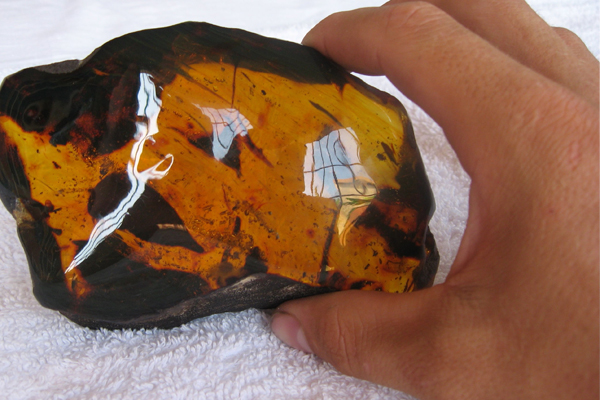
TYPES OF AMBER MINING:
- Open-Pit Mining:
- Underground Mining:
- Quarry Mining:
- Sluicing:
- Dredging:
- Dry Mining:
This type of mining involves digging a large pit in the ground to reach the amber deposit. The entire deposit is then extracted, sorted, and processed.
This type of mining involves digging a shaft or tunnel into the earth to reach the amber deposit. The deposit is then extracted and processed.
This type of mining involves extracting amber from a quarry, or open-pit mine. The entire deposit is then extracted, sorted and processed.
This type of mining involves using a sluice box to separate the amber from the sediment. The sluice box is a water channel that uses the force of running water to separate heavier particles from lighter ones.
This type of mining involves using a dredge to extract amber from rivers and lakes. The dredge is a boat used to scoop up large amounts of sediment and deposit it into a barge. The sediment is then processed for the amber.
This type of mining involves digging into dry land to extract amber. The entire deposit is then extracted, sorted, and processed.
USES OF AMBER MINING:
Economic Development: The extraction of amber is an important source of income and employment for many communities in regions where the mineral is found. It can also contribute to the overall economic development of a country by generating foreign exchange and providing employment opportunities.
Commercial Use: Amber is used in jewelry, as well as in medical, cosmetic, and pharmaceutical products. It is also utilized in the production of clothing, furniture, and home decor items.
Environmental Impact: Mining for amber can have a significant impact on the environment, causing habitat destruction, soil erosion, air and water pollution, and disruption of local ecosystems.
Social Impact: In some cases, the extraction of amber can lead to social issues such as the displacement of local communities, forced labor, human rights abuses, and exploitation of workers.

